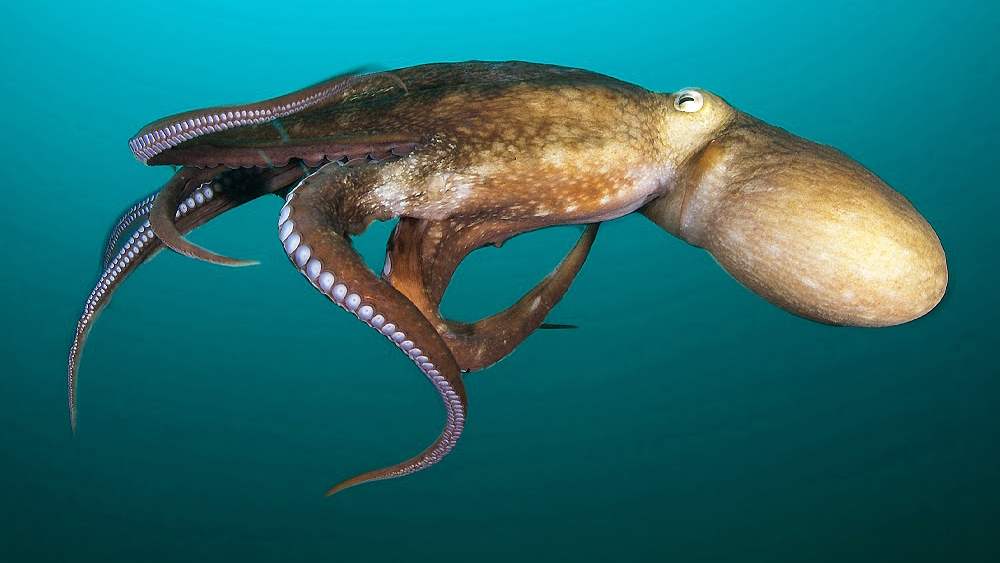
Octopus
Contribution by: Dr S.L. Meinberg
Orange is my favorite color. So, you can imagine my surprise, to see a brilliant, bright orange octopus moving quickly among the rocks in the Sea of Cortez. Its head was about as big as a baseball. My nephew pointed it out to me, as he quickly jumped from rock to rock, trying to follow the octopus, but soon lost it. We both looked around for it, but its use of camouflage and speed were too much for us to deal with.
Yes, I knew that octopuses can change their color and texture, in order to blend in with their surroundings, but I had never seen photos of a solid orange octopus in any magazine, book, or documentary. I was stoked.
I have always had a soft spot in my heart for octopuses. One day, my husband (who loved the ocean and all its inhabitants), had found a tiny octopus in a tide pool, and brought it home. We named him Octavious. He had his own aquarium, since he would more than likely have eaten the fish in our other five aquariums. Octopuses are believed to be the most intelligent of all the invertebrates. They can solve problems, remember solutions, and recognize other people, think strategically, play, do tricks, and even show emotion. Octavious was also super smart. (Oddly, all octopuses learn nothing from their parents. The father dies shortly after mating, and the mother dies as soon as their eggs hatch).
Octopuses are known as great escape artists, and so was Octavious. He lived for almost a year, but when we came home from work one day, he was no longer in his tank. He had found a way out of his home, traveled across the living room, down the hall, and into our bedroom, and died next to my husband’s side of the bed. (Octopuses can only last 20 to 30 minutes outside their salty seawater.) We were so sad, even though we knew that they have short lifespans to begin with (from six months to five years, depending on the species).
There are around 300 known Octopus species (with even more to identify), ranging in size from a few centimeters, up to 17 feet, in length. Some of the species of octopuses found in the Sea of Cortez include the common octopus and the California two-spot octopus, and the giant Pacific octopus. They are also a popular subject for underwater photographers and divers who enjoy observing their behavior in their natural habitat.
Octopuses have nine brains, one at the tip of each arm, and one in the head. They have eight flexible arms, although a recent scientist is now saying that two of the back arms are actually legs (pushing off with those two), which would mean six arms and two legs. (We’ll let the scientists battle that out!) Amazingly, an octopus can regrow lost limbs.
Octopuses have a small beak (like that of a parrot), which is the only hard thing on its body, which makes it easy to squeeze its entire body through tiny spaces. (Their bodies are covered in a slimy mucus, which also helps in this regard.) Octopuses have three hearts and blue blood. Each arm is strong and muscular, with around 2,000 suckers on each arm. Even with all those suckers, a sharp beak, and venom (all actually have poison!), the vast majority of octopuses will not hurt humans. Unless, of course, they must defend themselves. There are, however, three (to maybe six) Blue-ringed Octopuses that are dangerous to humans. Luckily, they live in an area from the Sea of Japan and South Australia, a long way from the Sea of Cortez.
Octopuses can communicate with others of their own species. They build dens, using shells and whatever else is available. Some are loners, and others live in groups. When threatened, in order to escape, an octopus will squirt black ink. This interferes with the predator’s sight and smell.
All in all, it was exciting to see an orange octopus in the wild!
We are Baja Charters
Follow Us on Social Media